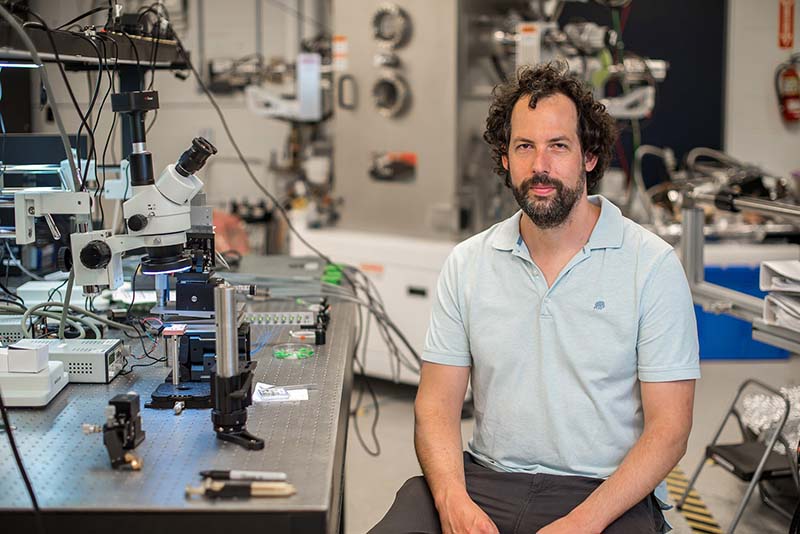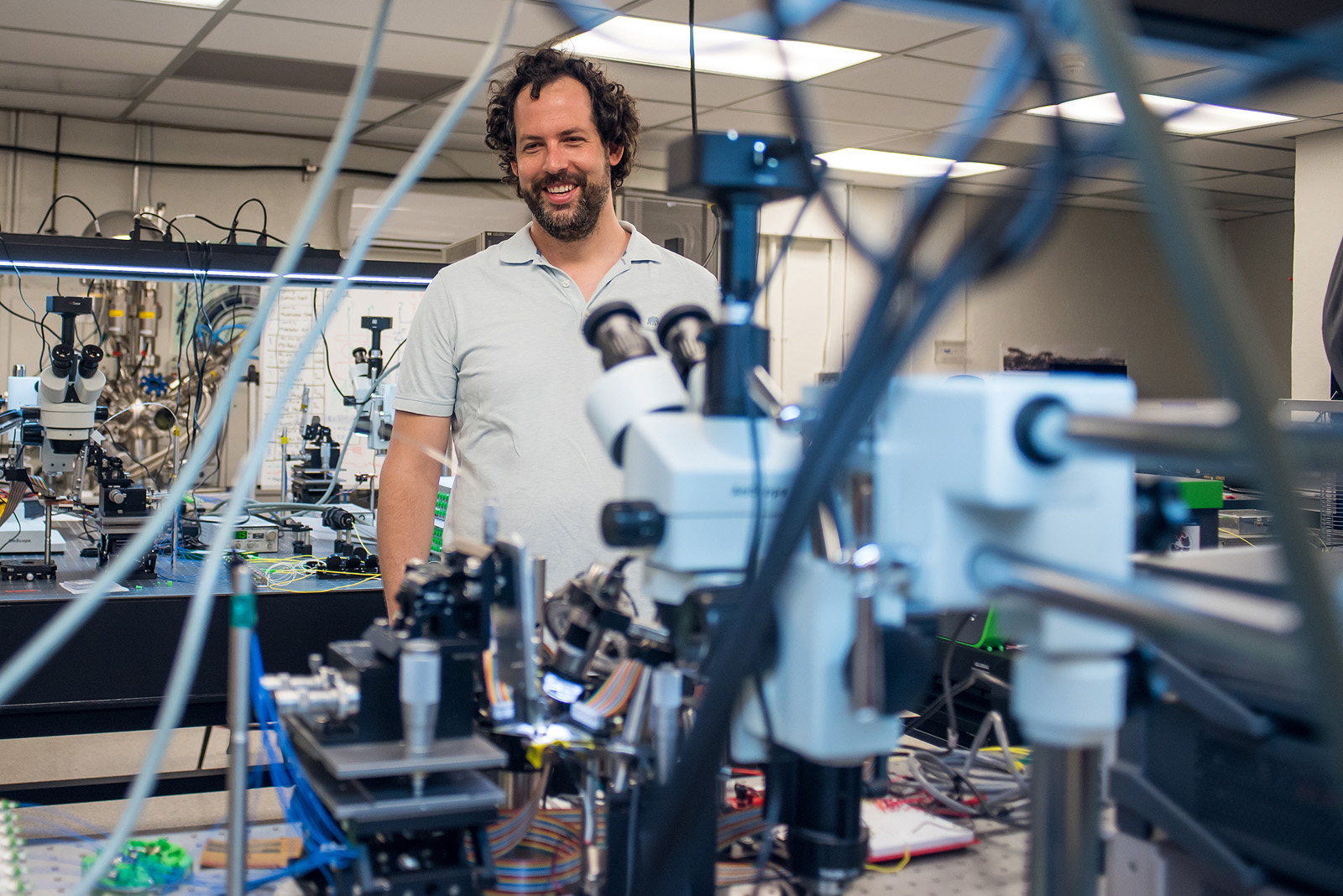Proponents of quantum technologies are often quick to point out all of their possible applications, from novel therapeutic drugs to impenetrable communications networks. The road from current science to our quantum future is long, but physicists like Dr. Nir Rothenberg are doing the fundamental research to map the best path forward.
An Assistant Professor in the Department of Physics, Engineering Physics, and Astronomy, Dr. Rotenberg studies a phenomenon called ‘non-linearity’ within the field of quantum photonics. In the observable world, light interacts with certain objects in predictable ways and, depending on the properties of the material, it can be reflected back, or absorbed, or bent, or made to change colour. At the quantum level, these light-matter interactions look very different, and they aren’t as well understood. Through his research, Dr. Rotenberg is working to bring predictability to the quantum domain—to establish a sort of roadmap for the way light particles, called ‘photons,’ interact with tiny, synthetic atom-like structures called ‘Quantum Dots’ (QDs).
In classical fiber-optic applications, electrical signals, like those generated by a computer, for example, are translated into light pulses to be sent from one place to another, and then re-translated into electrical signals once they’re received on the other end. In order for quantum networks to become a reality, an efficient system must exist that does the same thing with quantum information.
“Photons are wonderful carriers of information, because relative to everything else, there are very few losses,” said Rotenberg, “Light is the only way you can send any kind of quantum state from one place to another, so we have to develop the capabilities to do this really efficiently, and we’ll have to be able to manipulate and process the light.”

But even for quantum photonics, losses both in transmission but also due to interaction of the quantum system with its environment are the biggest hurdles. These losses lead to low efficiency in quantum systems, which in turn increases the amount of resources required to get them to function properly. Rotenberg and his team are trying to remedy this problem by taking a basic, rather than applied science, approach to quantum photonics by optimizing the system beginning with its most rudimentary components. For him, the central question is: given these interactions between QDs and photons, how can I put them together to make my intended result occur 100% rather than 50% of the time, so that when I want to scale my circuit I can do so without losses?
Quantum mechanics is confusing to most people because the phenomena it describes bears little to no resemblance to the laws of physics that govern the observable world. For Rotenberg, that disconnect is what originally attracted him to the field.
“Things behaved differently from how I expected them to, and I found that more interesting than when I could predict what was going to happen,” he said. In terms of photonics, he says he was intrigued by the pliability of light at very small scales. “At the nanoscale, you can make the light do very different things just by changing the geometry of the structure it’s flowing through or interacting with.”
“We in the Physics Department, and in the faculty of Engineering and Applied Science, were thrilled when we were able to attract Dr. Rotenberg to Queen's,” said Dr. Robert Knobel, Department Head of Physics, Engineering Physics and Astronomy. “Nir's research on the nonlinear properties of quantum optical systems is really exciting, and comes just as quantum systems are about to hit the mainstream. He joins a growing group of faculty in Physics, Engineering Physics and Astronomy interested in nanophotonics, where we are tackling these problems from theoretical physics, computational, materials science and engineering points of view.”
Dr. Rotenberg completed his undergraduate and graduate degrees in engineering science and the physics at the University of Toronto. As a postdoctoral researcher first AMOLF in Amsterdam, Netherlands, and then at the Max Planck Institute in Erlangen, Germany, he was given the opportunity to combine his interests in nanophotonics with the field of quantum optics. Afterwards he worked at the Niels Bohr institute in Copenhagen, where he gained experience working with Quantum Dot systems.
Now at Queen’s, he’s working on combining all of his knowledge. His addition to the faculty couldn’t have come at a better time. “I see us as being on the cusp of opening up an entirely new field of nonlinear optics,” he said. “We are at the point where we can have nearly 100% efficient interactions between single photons, and quantum objects. This whole regime of fundamental physics that we could not access is starting to open.”
Once these quantum non-linearities are better understood, Dr. Rotenberg says they can theoretically be exploited for industrial use. “I see us being able to create all-optical quantum technologies, and then I’m hopeful that by collaborating with people at Queen’s and abroad, we can put them towards creating quantum networks and circuits.”
